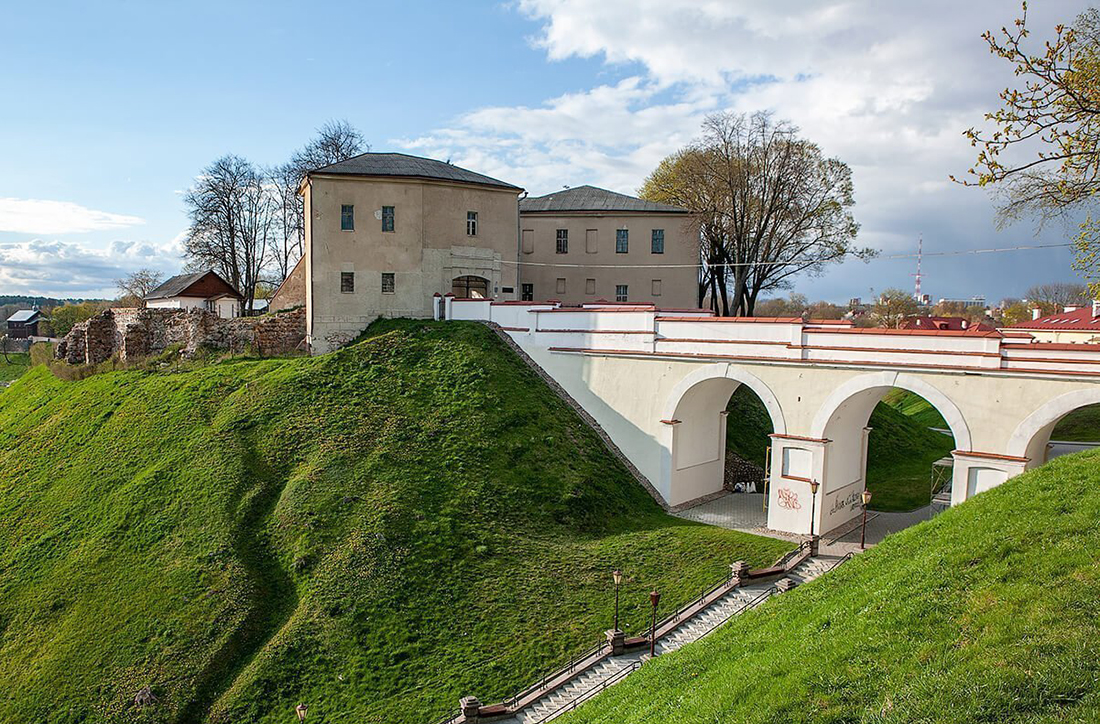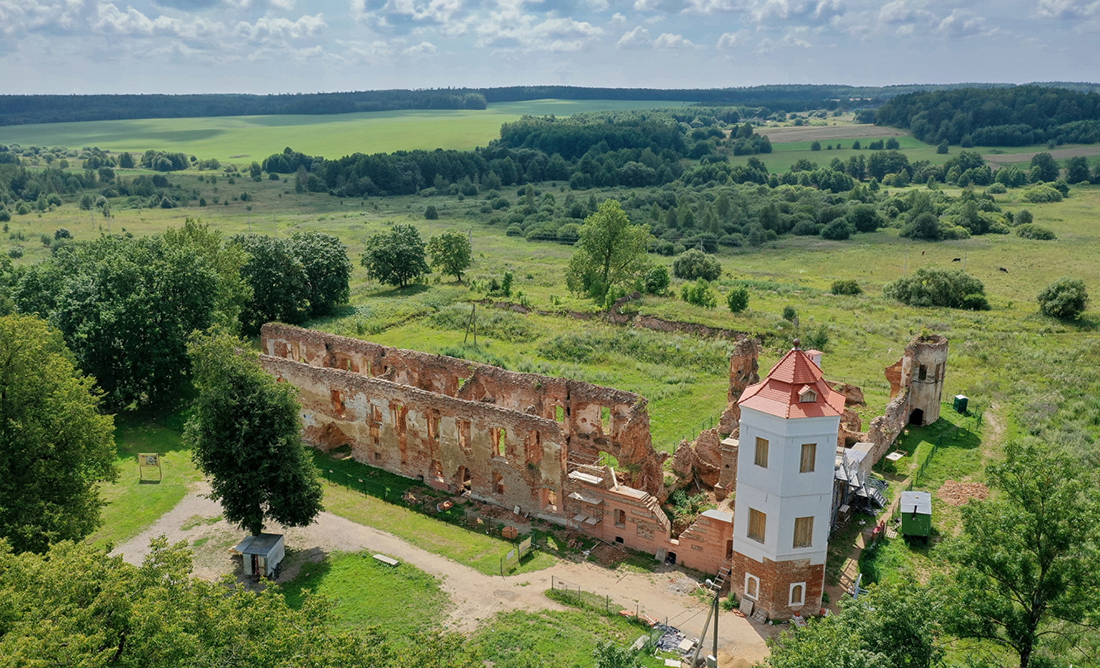
.jpg)

St. Francis Xavier (Farny) Cathedral



Golshany Castle

The Golshany Castle inspired the famous Belarusian writer Vladimir Korotkevich to create his famous novel “The Black Castle Olshansky”. Some time ago this castle, built for the junior office clerk of the Grand Duchy of Lithuania Pavel Stefan Sapieha in the Renaissance and Mannerism tradition, was considered one of the finest in the Polish-LithuanianCommonwealth. In the 17th century the castle was passed to other owners, and subsequently it frequently changed owners. During the Northern War in the beginning of the 18th century it was severely damaged, but remained inhabited until 1939. During the Soviet era new buildings were built in the village from the bricks of the castle. The ruins of the castle have the status of a state monument.
The Krevsky Castle was constructed between 1338 and 1345 by the order of the Grand Duke of Lithuania Olgerd. In 1385, the Kreva Union Act — a treaty on the alliance of the Grand Duchy of Lithuania and the Kingdom of Poland — was signed in the castle. This historic document influenced the fate of all European nations. The Krevsky Castle is the participant and witness of World War I. A protruding iron carcass and concrete slabs can still be seen in one of the destroyed towers of the castle. During the warfare the castle was in the hands of the Germans. To get to the enemy, the Russian artillery was forced to shoot the castle. The Russian military offensive operation in this front sector was headed by the commander of the Western Front, the lieutenant general Denikin, the future famous head of the White Guard.
Novogrudok Castle

Novogrudok is one of the most ancient Belarusian towns. The first written mention of it in chronicles was made in 1044 and is associated with the crusade of the Grand Duke Yaroslav the Wise to Lithuania. In the 13th century Novogrudok became the capital of the Grand Duchy of Lithuania. After the capital was moved to Vilna (in 1323), Novogrudok remained an essential defensive outpost of the Grand Duchy of Lithuania. The ancient center of Novogrudok is the castle. At the beginning of the 11th century wooden fortifications appeared in this place. The first stone tower appeared at the end of the 14th century – the Scale which remained in ruins until today. By the beginning of the 16th century the Novogrudok Castle had seven stone towers and was the most powerful in the Grand Duchy of Lithuania. It repeatedly withstood the siege of crusaders, the Mongol-Tatars and Galicia-Volyn dukes. During the Northern War (1700-1721) the castle buildings were destroyed. The silhouette of the undamaged Scale tower is one of the recognizable symbols of Belarus.
Since 2000 festivals of medieval culture and tilting matches have been held near the castle in Novogrudok.
Zhirovichi Monastery
The Holy Dormition Stavropegic Zhirovichi Monastery in Slonim District is part of Belarus’ national heritage, a place of fascinating history and spiritual strength, and home to the legendary relic – the Zhirovichi Icon of the Mother of God.
The Zhirovichi Icon is known not only as a wonderworking icon but also as a unique piece of art, historical and cultural phenomenon. It is respected both by Orthodox and Catholic believers and is on the list of the 100 most valued Orthodox icons in the world. This is the smallest of the most respected icons of the Mother of God, it is an oval piece of jasper (5.6x4.4cm) with a relief image of the Mother of God holding the infant Jesus. The icon was found in vast forests belonging to treasurer of the Grand Duchy of Lithuania, boyar Soltan near Zhirovichi in the spring of 1470. It is closely connected with the history of the Holy Dormition Monastery. The monastery is one of the largest architectural ensembles of the 17th — 18th centuries in Belarus. It has never closed throughout its history and is a major attraction for tourists and pilgrims.
The Mir Castle is a real diamond in the castle crown of Belarus. The residence of the famous Radziwills family, which is included in the UNESCO World Heritage list is an outstanding specimen of defense architecture of the 16th-17th centuries. Apart from an unassailable citadel which houses a museum and a hotel, the Mir Castle Complex includes an Italian Renaissance garden, an English park, a pond and a chapel.
⇒ To go back to the main article, please, click here
